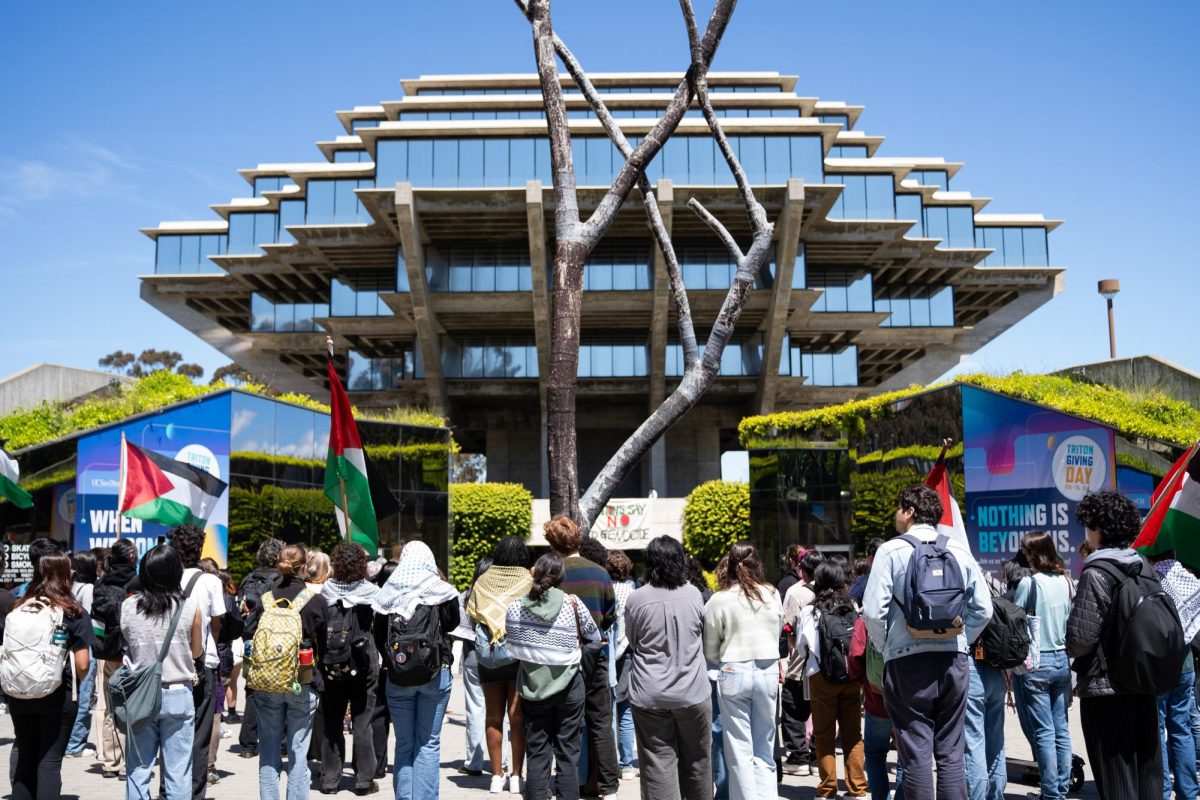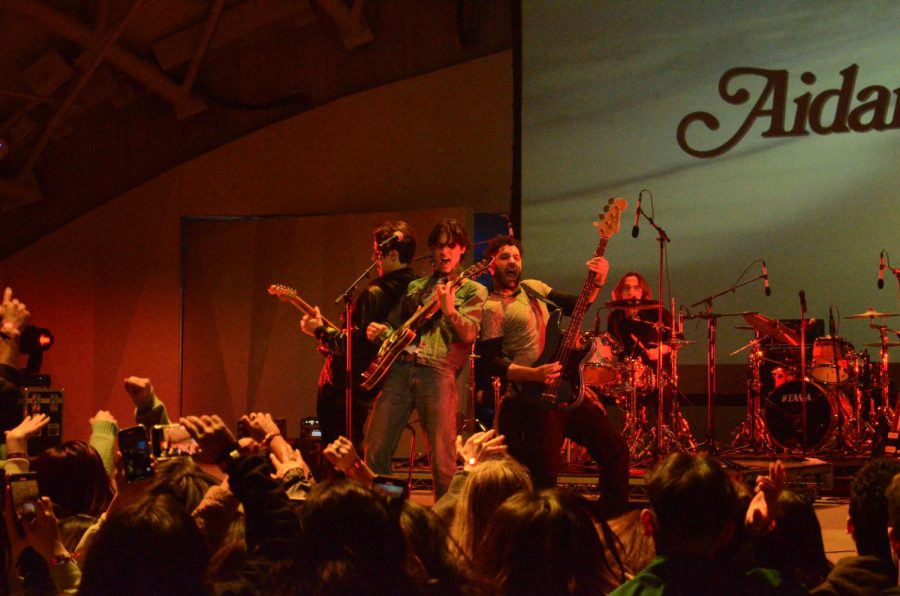Every day, Kathinka Froystad climbs up and down four flights of stairs to enter her apartment on the top of Geneva Hall. While most UCSD students would cringe at the thought, Froystad said she is used to it because it reminds her of the mountains in her home, Norway.
Froystad lives in the rooftop apartment, suspended above International House Walk, with her partner Roar Hostaker, who is also a scholar from Norway. Since they are at the top of the building on the west side of campus, their living room window has a panoramic view of the ocean and paragliders flying above the Torrey Pines Gliderport.
The one-bedroom apartment’s layout is similar to the Eleanor Roosevelt College apartments – the only difference is it is constructed for just one or two people and there are no custodial services offered. It comes furnished with a sofa and a coffee table for the living room. In the bedroom, there is a bed and a drawer that comes with the apartment. At the end of the bed sits a desk that Hostaker bought from Craigslist the he uses as a workstation.
“”I bought it from someone in the neighborhood,”” he said. “”It was in a gated community and it was a new concept for me.””
According to Froystad and Hostaker, gated communities are nearly nonexistent in Norway. Froystad attributes it to perhaps a distrust of neighbors that Americans feel in their own community.
Like International House, the Scholar-in-Residence program is aimed at exposing international scholars to undergraduate life in the United States. As with any culture shock, sometimes dissonance arises from the exposure. Although Froystad has visited the United States before, one alarming aspect of American living is the clear racial distinctions that exist at UCSD.
“”There is a white professor, Asian-American students, no African-Americans and the majority of the people in custodial and dining services are Hispanic,”” Froystad said. “”It was something I’ve heard of about America, but it is another thing when you see it in your face.”” Froystad said.
Emily Maxon, the director of I-House, spent the past three years living in one of these bridges, but she is leaving her post this week to move to Argentina with her husband and son.
Living on campus is a requirement for the I-House director. When Maxon began her job in 2003, her young son was able to grow up in the I-House environment. “”We’re always going to programs, such as culture night, global marketplaces and events on the Eleanor Roosevelt College green,”” she said. “”My son is exposed to people all over the world every day.””
Occasionally there are families that live on campus, but the residents of the other bridges are the resident dean and visiting scholars.
Visiting scholars who apply for on-campus housing go through the same application process as undergraduates who apply to I-House. According to Greg Mallinger, the facility’s assistant, applicants are required to answer essay questions and have a degree of involvement in I-House events. Visiting scholars who apply for housing in I-House are required to stay for a quarter or a year so that they can get involved.
“”People who want to stay for just two weeks or a month aren’t fit for this,”” Mallinger said. Additionally, there are not enough I-House staff members to constantly review housing applications.
Being involved in the life of I-House is not easy for visiting scholars; because of time spent doing research, residents lack the free time to attend or plan events for I-House residents. Furthermore, visiting scholars tend to be older and at a different stage of life from the 19- and 20-year-olds who live in I-House. Some are married, some have families and some are twice their age.
It is not impossible though. According to Maxon, ideally, the visiting scholars would help come up with programs and ideas for undergraduate I-House residents. There have been scholars who do get involved, such as showing an immigration film series and organizing field trips to the Wild Animal Park.
“”We try to encourage the visiting scholar to get involved because they are a great resource for students to get to know,”” Mallinger said.
Froystad has been able to participate in and even help plan I-House events despite such factors. She taught a Norwegian cooking class and has led conversation tables at Cafe Ventanas.
“”In the beginning it was tricky because of the age difference and the education level,”” Froystad said. “”It’s better when there is something else to talk about besides the barriers of age and nationality. I-House is very good at overriding that.””
ERC sophomore Nasim Novin, a resident of I-House, was able to talk with Froystad without age or nationality as a barrier.
“”I met her at a language conversation table and we talked about various issues that wouldn’t come up with a normal conversation, such as her research,”” Novin said. From an undergraduate I-House resident’s perspective, however, the visiting scholars do not have a major role in their I-House living experience.







